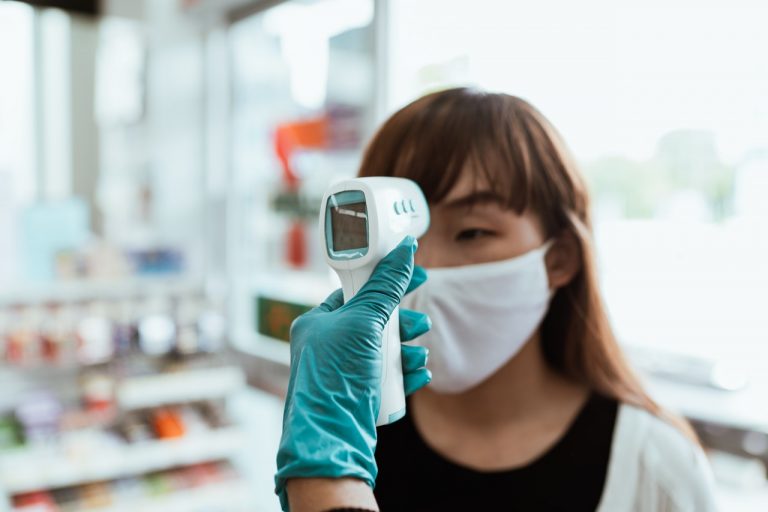On Tuesday, Mar. 15, China once again implemented harsh lockdown restrictions as more than 5,000 new cases of COVID-19 were reported across multiple cities.
Despite China’s strict “zero-COVID” policy, this is the worst outbreak in two years since the pandemic’s start. It has prompted actions to contain the pandemic.
According to the National Health Commission, 5,280 new positive cases of COVID-19 were found on Tuesday, more than double the amount recorded the day before. This count excludes asymptomatic cases, though Beijing did offer data on those cases.
These cases have all been reported in more than a dozen provinces and big cities, including Beijing, Shanghai, and Shenzhen. No deaths have been confirmed so far. Of course, the communist regime falsifies all forms of data, so it’s challenging to know the true severity of the recent spike.
Rising cases hit China again
In China, at least 11 cities and counties throughout the mainland are under lockdown, The Guardian reported.
Success
You are now signed up for our newsletter
Success
Check your email to complete sign up
Jilin province is among the areas hit worst by the outbreak. It has seen more than 3,000 cases, despite the restrictions and ban on travel in and out of the province, as reported by the National Health Commission.
Medical personnel and supplies are being deployed from other provinces, while military reservists are on standby. The mayor of Jilin and the head of the Changchun health commission were both dismissed from their posts on Saturday, Mar. 12, state media reported.
The city of Shenzhen, located in the Guangdong province, is also under lockdown, which started on Sunday, Mar. 13. Sixty-six new cases had been reported, adding to the 3,400 new cases found nationwide at the same time.
The city’s residents were told to remain at home while the government tries to stop the alleged “Omicron flare-up linked to neighboring virus-ravaged Hong Kong.”
The lockdown is scheduled to end on Mar. 20, stated a city government notice. Three rounds of mass testing will be implemented in the city.
In Shanghai, the city’s relaxed COVID-19 policy is said to be facing its greatest challenge yet, reported SCMP. The city’s schools and bus services have been suspended, preventing residents from leaving the city unless “absolutely necessary.”
Shanghai’s approach allows more freedom compared to other cities. For example, citizens are required to undergo “seven days of home quarantine” upon completing two weeks in a central facility. The restrictions in Shanghai are also more focused on clusters in specific areas instead of enforcing a full citywide lockdown.
A factory in the city of Dongguan was forced to lock down and shut down its production in the wake of the outbreak. The city itself warned business employees to work from home; only necessary activities like grocery shopping and testing would be permitted.
While the nationwide number is allegedly low compared to other countries, the spike of cases still concerns health experts. They said that the coming weeks would be “a crucial factor” for the fight against the Omicron variant.
The people within the outbreak
Channel News Asia (CNA) interviewed several people as the “zero-COVID” policy moves to curb the outbreak. With the city of Shanghai under threat from the outbreak, its popular waterfront was mainly empty with only a few pedestrians.
Several restaurateurs were told to close their dine-in services, or they would be shut down.
“We were informed last night to suspend [dine-in service] and we’ll obey, otherwise we would have to shut down if they found out,” one Shanghai restaurant owner told AFP.
One resident even complained about the city doing “a bad job” for censoring negative comments online.
“Preventing and controlling the virus accurately in Shanghai is just a joke, an extremely irresponsible joke,” argued another.
In Shenzhen, there was a significant amount of panic buying at supermarkets, quickly depleting shelves. Mass polymerase chain reaction (PCR) testing was being conducted, heavily secured by barricades that blocked paths to compounds.
According to Jilin health commission official Zhang Yan, the response to the cases was “lacking.”
“There is insufficient understanding of the characteristics of the Omicron variant… and judgment has been inaccurate,” he said at a press briefing.
A prominent Chinese scientist said that Beijing has to live with the virus. But other researchers at Peking University also warned that the country would be hit with a “colossal outbreak” that would disrupt the medical system if regulations are not taken seriously.














